- Home
- Agatha Christie
Poirot's Early Cases Page 3
Poirot's Early Cases Read online
Page 3
Manchester Evening News: ‘Told briskly, vivaciously, and with ever-fertile imagination.’
New York Herald Tribune: ‘Don’t miss it.’
28. Mrs McGinty’s Dead (1952)
‘Mrs McGinty’s dead!’ / ‘How did she die?’ / ‘Down on one knee, just like I!’ So goes the old children’s rhyme. A crushing blow to the back of the head kills a real-life Mrs McGinty in her cottage in the village of Broadhinny—Superintendent Spence’s jurisdiction. Then the killer tore up the floorboards in search of…what? Justice presumes a pittance of cash; and justice has condemned James Bentley, her loathsome lodger, to hang for the crime. But Superintendent Spence is not satisfied with the verdict, and appeals to Poirot to investigate—and save the life of the wretch Bentley.
Of note: Crime novelist Ariadne Oliver, of Cards on the Table, returns to help Poirot and Spence solve the crime.
Sunday Times: ‘So simple, so economical, so completely baffling. Each clue scrupulously given, with superb sleight of hand.’
San Francisco Chronicle: ‘The plot is perfect and the characters are wonderful.’
The New York Times: ‘The best Poirot since…Cards on the Table.’
29. After the Funeral (1953)
Mrs Cora Lansquenet admits to ‘always saying the wrong thing’—but this last remark has gotten her a hatchet in the head. ‘He was murdered, wasn’t he?’ she had said after the funeral of her brother, Richard Abernethie, in the presence of the family solicitor, Mr Entwhistle, and the assembled Abernethies, who are anxious to know how Richard’s sizable fortune will be distributed. Entwhistle, desperate not to lose any more clients to murder, turns to Hercule Poirot for help. A killer complicates an already very complicated family—classic Christie; pure Poirot.
Liverpool Post: ‘Keeps us guessing—and guessing wrongly—to the very last page.’
30. Hickory Dickory Dock (1955)
An outbreak of kleptomania at a student hostel is not normally the sort of crime that arouses Hercule Poirot’s interest. But when it affects the work of his secretary, Miss Lemon, whose sister works at the hostel, he agrees to look into the matter. The matter becomes a bona fide mystery when Poirot peruses the bizarre list of stolen and vandalized items—including a stethoscope, some old flannel trousers, a box of chocolates, a slashed rucksack, and a diamond ring found in a bowl of a soup. ‘A unique and beautiful problem,’ the great detective declares. Unfortunately, this ‘beautiful problem’ is not just one of thievery and mischief—for there is a killer on the loose.
Times Literary Supplement: ‘An event…There is plenty of entertainment.’
The New York Times: ‘The Christie fan of longest standing, who thinks he knows every one of her tricks, will still be surprised by…the twists here.’
31. Dead Man’s Folly (1956)
Sir George and Lady Stubbs desire to host a village fete with a difference—a mock murder mystery. In good faith, Ariadne Oliver, the much-lauded crime novelist, agrees to organise the proceedings. As the event draws near, however, Ariadne senses that something sinister is about to happen—and calls upon her old friend Hercule Poirot to come down to Dartmoor for the festivities. Ariadne’s instincts, alas, are right on the money, and soon enough Poirot has a real murder to investigate.
The New York Times: ‘The infallibly original Agatha Christie has come up, once again, with a new and highly ingenious puzzle-construction.’
Times Literary Supplement: ‘The solution is of the colossal ingenuity we have been conditioned to expect.’
32. Cat Among the Pigeons (1959)
A revolution in the Middle East has a direct and deadly impact upon the summer term at Meadowbank, a picture-perfect girls’ school in the English countryside. Prince Ali Yusuf, Hereditary Sheikh of Ramat, whose great liberalizing experiment—‘hospitals, schools, a Health Service’—is coming to chaos, knows that he must prepare for the day of his exile. He asks his pilot and school friend, Bob Rawlinson, to care for a packet of jewels. Rawlinson does so, hiding them among the possessions of his niece, Jennifer Sutcliffe, who is bound for Meadowbank. Rawlinson is killed before he can reveal the hiding place—or even the fact that he has employed his niece as a smuggler. But someone knows, or suspects, that Jennifer has the jewels. As murder strikes Meadowbank, only Hercule Poirot can restore the peace.
Of note: In this novel we meet Colonel Pikeaway, later to appear in the non-Poirots Passenger to Frankfurt and Postern of Fate, and we meet the financier Mr Robinson, who will also appear in Postern of Fate and who will show up at Miss Marple’s Bertram’s Hotel.
Daily Express, of Cat Among the Pigeons: ‘Immensely enjoyable.’
The New York Times: ‘To read Agatha Christie at her best is to experience the rarefied pleasure of watching a faultless technician at work, and she is in top form in Cat Among the Pigeons.’
33. The Adventure of the Christmas Pudding (1960)
‘This book of Christmas fare may be described as “The Chef’s Selection.” I am the Chef!’ Agatha Christie writes in her Foreword, in which she also recalls the delightful Christmases of her youth at Abney Hall in the north of England. But while the author’s Christmases were uninterrupted by murder, her famous detective’s are not (see also Hercule Poirot’s Christmas). In the title novella, Poirot—who has been coerced into attending ‘an old-fashioned Christmas in the English countryside’—gets all the trimmings, certainly, but he also gets a woman’s corpse in the snow, a Kurdish knife spreading a crimson stain across her white fur wrap.
Collected within: The Adventure of the Christmas Pudding (novella); ‘The Mystery of the Spanish Chest’; The Under Dog (novella); ‘Four-and-Twenty Blackbirds’; ‘The Dream’; and a Miss Marple mystery, ‘Greenshaw’s Folly.’
Times Literary Supplement: ‘There is the irresistible simplicity and buoyancy of a Christmas treat about it all.’
34. The Clocks (1963)
Sheila Webb, typist-for-hire, has arrived at 19 Wilbraham Crescent in the seaside town of Crowdean to accept a new job. What she finds is a well-dressed corpse surrounded by five clocks. Mrs Pebmarsh, the blind owner of No. 19, denies all knowledge of ringing Sheila’s secretarial agency and asking for her by name—yet someone did. Nor does she own that many clocks. And neither woman seems to know the victim. Colin Lamb, a young intelligence specialist working a case of his own at the nearby naval yard, happens to be on the scene at the time of Sheila Webb’s ghastly discovery. Lamb knows of only one man who can properly investigate a crime as bizarre and baffling as what happened inside No. 19—his friend and mentor, Hercule Poirot.
The New York Times: ‘Here is the grand-manner detective story in all its glory.’
The Bookman: ‘Superlative Christie…extremely ingenious.’
Saturday Review: ‘A sure-fire attention-gripper—naturally.’
35. Third Girl (1966)
Hercule Poirot is interrupted at breakfast by a young woman who wishes to consult with the great detective about a murder she ‘might have’ committed—but upon being introduced to Poirot, the girl flees. And disappears. She has shared a flat with two seemingly ordinary young women. As Hercule Poirot—with the aid of the crime novelist Mrs Ariadne Oliver—learns more about this mysterious ‘third girl,’ he hears rumours of revolvers, flick-knives, and blood-stains. Even if a murder might not have been committed, something is seriously wrong, and it will take all of Poirot’s wits and tenacity to establish whether the ‘third girl’ is guilty, innocent, or insane.
Sunday Telegraph: ‘First-class Christie.’
Financial Times: ‘Mesmerising ingenuity.’
36. Hallowe’en Party (1969)
Mystery writer Ariadne Oliver has been invited to a Hallowe’en party at Woodleigh Common. One of the other guests is an adolescent girl known for telling tall tales of murder and intrigue—and for being generally unpleasant. But when the girl, Joyce, is found drowned in an apple-bob-bing tub, Mrs Oliver wonders after the fictional nature of the girl’s claim that she had once
witnessed a murder. Which of the party guests wanted to keep her quiet is a question for Ariadne’s friend Hercule Poirot. But unmasking a killer this Hallowe’en is not going to be easy—for there isn’t a soul in Woodleigh who believes the late little storyteller was actually murdered.
Daily Mirror: ‘A thundering success…a triumph for Hercule Poirot.’
37. Elephants Can Remember (1972)
‘The Ravenscrofts didn’t seem that kind of person. They seemed well balanced and placid.’
And yet, twelve years earlier, the husband had shot the wife, and then himself—or perhaps it was the other way around, since sets of both of their fingerprints were on the gun, and the gun had fallen between them. The case haunts Ariadne Oliver, who had been a friend of the couple. The famous mystery novelist desires this real-life mystery solved, and calls upon Hercule Poirot to help her do so. Old sins have long shadows, the proverb goes. Poirot is now a very old man, but his mind is as nimble and as sharp as ever and can still penetrate deep into the shadows. But as Poirot and Mrs Oliver and Superintendent Spence reopen the long-closed case, a startling discovery awaits them. And if memory serves Poirot (and it does!), crime—like history—has a tendency to repeat itself.
The Times: ‘Splendid.’
38. Poirot’s Early Cases (1974)
With his career still in its formative years, we learn many things about how Poirot came to exercise those famous ‘grey cells’ so well. Fourteen of the eighteen stories collected herein are narrated by Captain Arthur Hastings—including what would appear to be the earliest Poirot short story, ‘The Affair at the Victory Ball,’ which follows soon on the events of The Mysterious Affair at Styles. Two of the stories are narrated by Poirot himself, to Hastings. One, ‘The Chocolate Box,’ concerns Poirot’s early days on the Belgian police force, and the case that was his greatest failure: ‘My grey cells, they functioned not at all,’ Poirot admits. But otherwise, in this most fascinating collection, they function brilliantly, Poirot’s grey cells, challenging the reader to keep pace at every twist and turn.
Collected within: ‘The Affair at the Victory Ball’; ‘The Adventure of the Clapham Cook’; ‘The Cornish Mystery’; ‘The Adventure of Johnnie Waverly’; ‘The Double Clue’; ‘The King of Clubs’; ‘The Lemesurier Inheritance’; ‘The Lost Mine’; ‘The Plymouth Express’; ‘The Chocolate Box’; ‘The Submarine Plans’; ‘The Third-Floor Flat’; ‘Double Sin’; ‘The Market Basing Mystery’; ‘Wasps’ Nest’; ‘The Veiled Lady’; ‘Problem at Sea’; ‘How Does Your Garden Grow?’
Sunday Express: ‘Superb, vintage Christie.’
39. Curtain: Poirot’s Last Case (1975)
Captain Arthur Hastings narrates. Poirot investigates. ‘This, Hastings, will be my last case,’ declares the detective who had entered the scene as a retiree in The Mysterious Affair at Styles, the captain’s, and our, first encounter with the now-legendary Belgian detective. Poirot promises that, ‘It will be, too, my most interesting case—and my most interesting criminal. For in X we have a technique superb, magnificent…X has operated with so much ability that he has defeated me, Hercule Poirot!’ The setting is, appropriately, Styles Court, which has since been converted into a private hotel. And under this same roof is X, a murderer five-times over; a murderer by no means finished murdering. In Curtain, Poirot will, at last, retire—death comes as the end. And he will bequeath to his dear friend Hastings an astounding revelation. ‘The ending of Curtain is one of the most surprising that Agatha Christie ever devised,’ writes her biographer, Charles Osborne.
Of note: On 6 August 1975, upon the publication of Curtain, The New York Times ran a front-page obituary of Hercule Poirot, complete with photograph. The passing of no other fictional character had been so acknowledged in America’s ‘paper of record.’ Agatha Christie had always intended Curtain to be ‘Poirot’s Last Case’: Having written the novel during the Blitz, she stored it (heavily insured) in a bank vault till the time that she, herself, would retire. Agatha Christie died on 12 January 1976.
Time: ‘First-rate Christie: fast, complicated, wryly funny.’
The Affair at the Victory Ball
I
Pure chance led my friend Hercule Poirot, formerly chief of the Belgian force, to be connected with the Styles Case. His success brought him notoriety, and he decided to devote himself to the solving of problems in crime. Having been wounded on the Somme and invalided out of the Army, I finally took up my quarters with him in London. Since I have a first-hand knowledge of most of his cases, it has been suggested to me that I select some of the most interesting and place them on record. In doing so, I feel that I cannot do better than begin with that strange tangle which aroused such widespread public interest at the time. I refer to the affair at the Victory Ball.
Although perhaps it is not so fully demonstrative of Poirot’s peculiar methods as some of the more obscure cases, its sensational features, the well-known people involved, and the tremendous publicity given it by the Press, make it stand out as a cause célèbre and I have long felt that it is only fitting that Poirot’s connection with the solution should be given to the world.
It was a fine morning in spring, and we were sitting in Poirot’s rooms. My little friend, neat and dapper as ever, his egg-shaped head tilted on one side, was delicately applying a new pomade to his moustache. A certain harmless vanity was a characteristic of Poirot’s and fell into line with his general love of order and method. The Daily Newsmonger, which I had been reading, had slipped to the floor, and I was deep in a brown study when Poirot’s voice recalled me.
‘Of what are you thinking so deeply, mon ami?’
‘To tell you the truth,’ I replied, ‘I was puzzling over this unaccountable affair at the Victory Ball. The papers are full of it.’ I tapped the sheet with my finger as I spoke.
‘Yes?’
‘The more one reads of it, the more shrouded in mystery the whole thing becomes!’ I warmed to my subject. ‘Who killed Lord Cronshaw? Was Coco Courtenay’s death on the same night a mere coincidence? Was it an accident? Or did she deliberately take an overdose of cocaine?’ I stopped, and then added dramatically: ‘These are the questions I ask myself.’
Poirot, somewhat to my annoyance, did not play up. He was peering into the glass, and merely murmured: ‘Decidedly, this new pomade, it is a marvel for the moustaches!’ Catching my eye, however, he added hastily: ‘Quite so—and how do you reply to your questions?’
But before I could answer, the door opened, and our landlady announced Inspector Japp.
The Scotland Yard man was an old friend of ours and we greeted him warmly.
‘Ah, my good Japp,’ cried Poirot, ‘and what brings you to see us?’
‘Well, Monsieur Poirot,’ said Japp, seating himself and nodding to me, ‘I’m on a case that strikes me as being very much in your line, and I came along to know whether you’d care to have a finger in the pie?’
Poirot had a good opinion of Japp’s abilities, though deploring his lamentable lack of method, but I, for my part, considered that the detective’s highest talent lay in the gentle art of seeking favours under the guise of conferring them!
‘It’s the Victory Ball,’ said Japp persuasively. ‘Come, now, you’d like to have a hand in that.’
Poirot smiled at me.
‘My friend Hastings would, at all events. He was just holding forth on the subject, n’est-ce pas, mon ami?’
‘Well, sir,’ said Japp condescendingly, ‘you shall be in it too. I can tell you, it’s something of a feather in your cap to have inside knowledge of a case like this. Well, here’s to business. You know the main facts of the case, I suppose, Monsieur Poirot?’
‘From the papers only—and the imagination of the journalist is sometimes misleading. Recount the whole story to me.’
Japp crossed his legs comfortably and began.
‘As all the world and his wife knows, on Tuesday last a grand Victory Ball was held. Every twopenny-halfpenny hop calls itself that n
owadays, but this was the real thing, held at the Colossus Hall, and all London at it—including your Lord Cronshaw and his party.’
‘His dossier?’ interrupted Poirot. ‘I should say his bioscope—no, how do you call it—biograph?’
‘Viscount Cronshaw was fifth viscount, twenty-five years of age, rich, unmarried, and very fond of the theatrical world. There were rumours of his being engaged to Miss Courtenay of the Albany Theatre, who was known to her friends as “Coco” and who was, by all accounts, a very fascinating young lady.’
‘Good. Continuez!’
‘Lord Cronshaw’s party consisted of six people: he himself, his uncle, the Honourable Eustace Beltane, a pretty American widow, Mrs Mallaby, a young actor, Chris Davidson, his wife, and last but not least, Miss Coco Courtenay. It was a fancy dress ball, as you know, and the Cronshaw party represented the old Italian Comedy—whatever that may be.’
‘The Commedia dell’ Arte,’ murmured Poirot. ‘I know.’
‘Anyway, the costumes were copied from a set of china figures forming part of Eustace Beltane’s collection. Lord Cronshaw was Harlequin; Beltane was Punchinello; Mrs Mallaby matched him as Pulcinella; the Davidsons were Pierrot and Pierette; and Miss Courtenay, of course, was Columbine. Now, quite early in the evening it was apparent that there was something wrong. Lord Cronshaw was moody and strange in his manner. When the party met together for supper in a small private room engaged by the host, everyone noticed that he and Miss Courtenay were no longer on speaking terms. She had obviously been crying, and seemed on the verge of hysterics. The meal was an uncomfortable one, and as they all left the supper-room, she turned to Chris Davidson and requested him audibly to take her home, as she was “sick of the ball”. The young actor hesitated, glancing at Lord Cronshaw, and finally drew them both back to the supper-room.

 Murder in the Mews
Murder in the Mews Postern of Fate
Postern of Fate The Regatta Mystery and Other Stories
The Regatta Mystery and Other Stories Sad Cypress
Sad Cypress Why Didn't They Ask Evans?
Why Didn't They Ask Evans? After the Funeral
After the Funeral And Then There Were None
And Then There Were None The Witness for the Prosecution
The Witness for the Prosecution Murder on the Orient Express
Murder on the Orient Express The Seven Dials Mystery
The Seven Dials Mystery Hercule Poirot: The Complete Short Stories
Hercule Poirot: The Complete Short Stories The Mysterious Affair at Styles
The Mysterious Affair at Styles Sleeping Murder
Sleeping Murder Hickory Dickory Dock
Hickory Dickory Dock The Moving Finger
The Moving Finger The Mirror Crack'd From Side to Side
The Mirror Crack'd From Side to Side Ordeal by Innocence
Ordeal by Innocence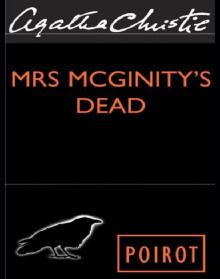 Mrs. McGinty's Dead
Mrs. McGinty's Dead Problem at Pollensa Bay and Other Stories
Problem at Pollensa Bay and Other Stories Death Comes as the End
Death Comes as the End Endless Night
Endless Night Parker Pyne Investigates
Parker Pyne Investigates Poirot's Early Cases: 18 Hercule Poirot Mysteries
Poirot's Early Cases: 18 Hercule Poirot Mysteries Murder Is Easy
Murder Is Easy An Autobiography
An Autobiography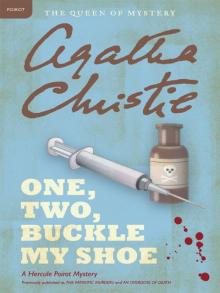 One, Two, Buckle My Shoe
One, Two, Buckle My Shoe A Pocket Full of Rye
A Pocket Full of Rye The Mysterious Mr. Quin
The Mysterious Mr. Quin The Mystery of the Blue Train
The Mystery of the Blue Train Hercule Poirot's Christmas: A Hercule Poirot Mystery
Hercule Poirot's Christmas: A Hercule Poirot Mystery Cards on the Table (SB)
Cards on the Table (SB) Three Act Tragedy
Three Act Tragedy The Secret Adversary
The Secret Adversary The Body in the Library
The Body in the Library The Pale Horse
The Pale Horse While the Light Lasts
While the Light Lasts The Golden Ball and Other Stories
The Golden Ball and Other Stories Double Sin and Other Stories
Double Sin and Other Stories The Secret of Chimneys
The Secret of Chimneys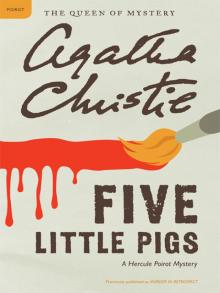 Five Little Pigs
Five Little Pigs Murder in Mesopotamia: A Hercule Poirot Mystery
Murder in Mesopotamia: A Hercule Poirot Mystery The Mousetrap and Other Plays
The Mousetrap and Other Plays Lord Edgware Dies
Lord Edgware Dies The Hound of Death
The Hound of Death The Murder on the Links
The Murder on the Links A Caribbean Mystery
A Caribbean Mystery Peril at End House: A Hercule Poirot Mystery
Peril at End House: A Hercule Poirot Mystery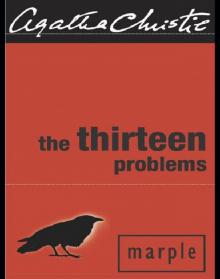 The Thirteen Problems
The Thirteen Problems By the Pricking of My Thumbs
By the Pricking of My Thumbs Mrs McGinty's Dead / the Labours of Hercules (Agatha Christie Collected Works)
Mrs McGinty's Dead / the Labours of Hercules (Agatha Christie Collected Works) Appointment With Death
Appointment With Death Murder Is Announced
Murder Is Announced The Big Four
The Big Four Three Blind Mice and Other Stories
Three Blind Mice and Other Stories Hercule Poirot- the Complete Short Stories
Hercule Poirot- the Complete Short Stories Passenger to Frankfurt
Passenger to Frankfurt They Do It With Mirrors
They Do It With Mirrors Poirot Investigates
Poirot Investigates The Coming of Mr. Quin: A Short Story
The Coming of Mr. Quin: A Short Story 4:50 From Paddington
4:50 From Paddington The Last Seance
The Last Seance Dead Man's Folly
Dead Man's Folly The Adventure of the Christmas Pudding
The Adventure of the Christmas Pudding The A.B.C. Murders
The A.B.C. Murders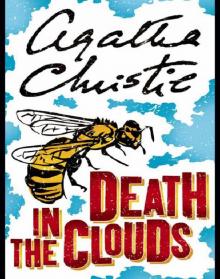 Death in the Clouds
Death in the Clouds Towards Zero
Towards Zero The Listerdale Mystery and Eleven Other Stories
The Listerdale Mystery and Eleven Other Stories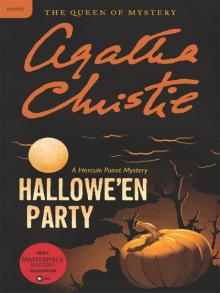 Hallowe'en Party
Hallowe'en Party Murder at the Vicarage
Murder at the Vicarage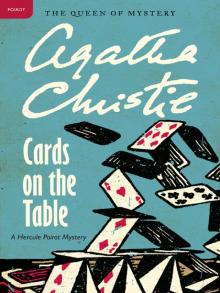 Cards on the Table
Cards on the Table Death on the Nile
Death on the Nile Curtain
Curtain Partners in Crime
Partners in Crime The Listerdale Mystery / the Clocks (Agatha Christie Collected Works)
The Listerdale Mystery / the Clocks (Agatha Christie Collected Works) Taken at the Flood
Taken at the Flood Dumb Witness
Dumb Witness The Complete Tommy and Tuppence
The Complete Tommy and Tuppence Problem at Pollensa Bay
Problem at Pollensa Bay Cat Among the Pigeons
Cat Among the Pigeons At Bertram's Hotel
At Bertram's Hotel Nemesis
Nemesis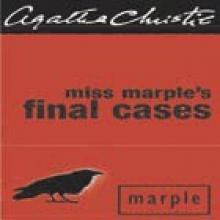 Miss Marple's Final Cases
Miss Marple's Final Cases The Hollow
The Hollow Midwinter Murder
Midwinter Murder They Came to Baghdad
They Came to Baghdad Third Girl
Third Girl Destination Unknown
Destination Unknown Hercule Poirot and the Greenshore Folly
Hercule Poirot and the Greenshore Folly Postern of Fate tat-5
Postern of Fate tat-5 Midsummer Mysteries
Midsummer Mysteries Poirot's Early Cases hp-38
Poirot's Early Cases hp-38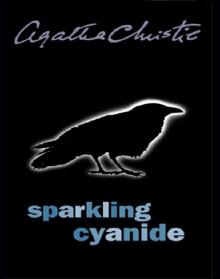 Sparkling Cyanide
Sparkling Cyanide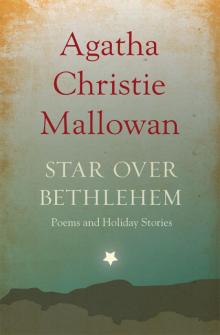 Star over Bethlehem
Star over Bethlehem Black Coffee hp-7
Black Coffee hp-7 Hercule Poirot's Casebook (hercule poirot)
Hercule Poirot's Casebook (hercule poirot) Murder in Mesopotamia hp-14
Murder in Mesopotamia hp-14 A Pocket Full of Rye: A Miss Marple Mystery (Miss Marple Mysteries)
A Pocket Full of Rye: A Miss Marple Mystery (Miss Marple Mysteries) The Listerdale Mystery
The Listerdale Mystery The Complete Tommy & Tuppence Collection
The Complete Tommy & Tuppence Collection Lord Edgware Dies hp-8
Lord Edgware Dies hp-8 Death in the Clouds hp-12
Death in the Clouds hp-12 Short Stories
Short Stories Third Girl hp-37
Third Girl hp-37 Why Didn't They Ask Evans
Why Didn't They Ask Evans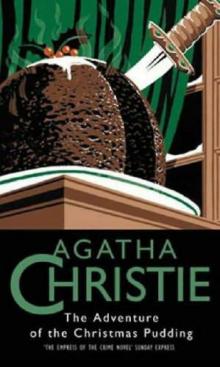 Adventure of the Christmas Pudding and other stories
Adventure of the Christmas Pudding and other stories Cards on the Table hp-15
Cards on the Table hp-15 The Mystery of the Blue Train hp-6
The Mystery of the Blue Train hp-6 After the Funeral hp-29
After the Funeral hp-29 Poirot Investigates hp-3
Poirot Investigates hp-3 Murder on the Links hp-2
Murder on the Links hp-2 The Mysterious Mr Quin
The Mysterious Mr Quin Curtain hp-39
Curtain hp-39 Hercule Poirot's Christmas hp-19
Hercule Poirot's Christmas hp-19 Partners in Crime tat-2
Partners in Crime tat-2 The Clocks hp-36
The Clocks hp-36 Murder, She Said
Murder, She Said The Clocks
The Clocks The Hollow hp-24
The Hollow hp-24 Appointment with Death hp-21
Appointment with Death hp-21 Murder in the mews hp-18
Murder in the mews hp-18 The Murder Of Roger Ackroyd hp-4
The Murder Of Roger Ackroyd hp-4 Dumb Witness hp-16
Dumb Witness hp-16 The Sittaford Mystery
The Sittaford Mystery Mrs McGinty's Dead
Mrs McGinty's Dead Evil Under the Sun
Evil Under the Sun The A.B.C. Murders hp-12
The A.B.C. Murders hp-12 The Murder at the Vicarage mm-1
The Murder at the Vicarage mm-1 The Body in the Library mm-3
The Body in the Library mm-3 Miss Marple and Mystery
Miss Marple and Mystery Sleeping Murder mm-14
Sleeping Murder mm-14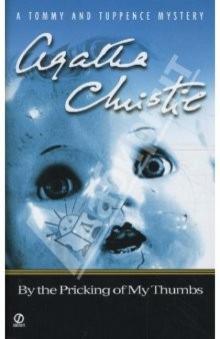 By the Pricking of My Thumbs tat-4
By the Pricking of My Thumbs tat-4 A Pocket Full of Rye mm-7
A Pocket Full of Rye mm-7 Hickory Dickory Dock: A Hercule Poirot Mystery
Hickory Dickory Dock: A Hercule Poirot Mystery The Big Four hp-5
The Big Four hp-5 The Labours of Hercules hp-26
The Labours of Hercules hp-26 The Complete Miss Marple Collection
The Complete Miss Marple Collection The Labours of Hercules
The Labours of Hercules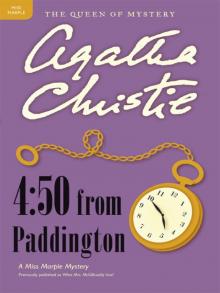 4.50 From Paddington
4.50 From Paddington A Murder Is Announced mm-5
A Murder Is Announced mm-5 Agahta Christie: An autobiography
Agahta Christie: An autobiography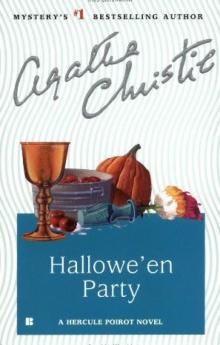 Hallowe'en Party hp-36
Hallowe'en Party hp-36 Black Coffee
Black Coffee The Mysterious Affair at Styles hp-1
The Mysterious Affair at Styles hp-1 Three-Act Tragedy
Three-Act Tragedy Best detective short stories
Best detective short stories Three Blind Mice
Three Blind Mice Nemesis mm-11
Nemesis mm-11 The Mirror Crack'd from Side to Side mm-8
The Mirror Crack'd from Side to Side mm-8 The ABC Murders
The ABC Murders Poirot's Early Cases
Poirot's Early Cases The Unexpected Guest
The Unexpected Guest A Caribbean Mystery - Miss Marple 09
A Caribbean Mystery - Miss Marple 09 The Murder of Roger Ackroyd
The Murder of Roger Ackroyd Elephants Can Remember hp-39
Elephants Can Remember hp-39 The Mirror Crack'd: from Side to Side
The Mirror Crack'd: from Side to Side Sad Cypress hp-21
Sad Cypress hp-21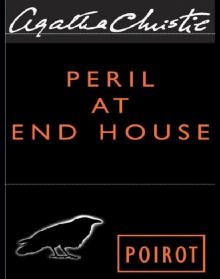 Peril at End House
Peril at End House Elephants Can Remember
Elephants Can Remember Best detective stories of Agatha Christie
Best detective stories of Agatha Christie Hercule Poirot's Christmas
Hercule Poirot's Christmas The Body In The Library - Miss Marple 02
The Body In The Library - Miss Marple 02 Evil Under the Sun hp-25
Evil Under the Sun hp-25 The Capture of Cerberus
The Capture of Cerberus The Hound of Death and Other Stories
The Hound of Death and Other Stories The Thirteen Problems (miss marple)
The Thirteen Problems (miss marple) The Thirteen Problems-The Tuesday Night Club
The Thirteen Problems-The Tuesday Night Club Spider's Web
Spider's Web At Bertram's Hotel mm-12
At Bertram's Hotel mm-12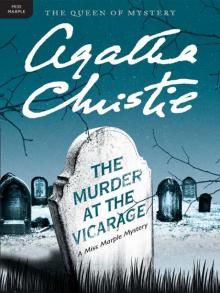 The Murder at the Vicarage (Agatha Christie Mysteries Collection)
The Murder at the Vicarage (Agatha Christie Mysteries Collection) A Caribbean Mystery (miss marple)
A Caribbean Mystery (miss marple) A Murder Is Announced
A Murder Is Announced Clues to Christie
Clues to Christie The Moving Finger mm-3
The Moving Finger mm-3 The Harlequin Tea Set and Other Stories
The Harlequin Tea Set and Other Stories Murder on the Links
Murder on the Links The Murder at the Vicarage
The Murder at the Vicarage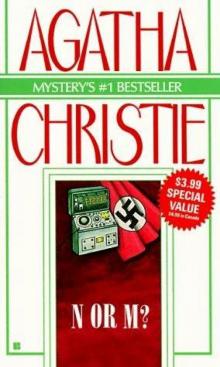 N or M tat-3
N or M tat-3 The Secret Adversary tat-1
The Secret Adversary tat-1 The Burden
The Burden Mrs McGinty's Dead hp-28
Mrs McGinty's Dead hp-28 Dead Man's Folly hp-31
Dead Man's Folly hp-31 Peril at End House hp-8
Peril at End House hp-8 Complete Short Stories Of Miss Marple mm-16
Complete Short Stories Of Miss Marple mm-16 Curtain: Poirot's Last Case
Curtain: Poirot's Last Case The Man in the Brown Suit
The Man in the Brown Suit They Do It With Mirrors mm-6
They Do It With Mirrors mm-6